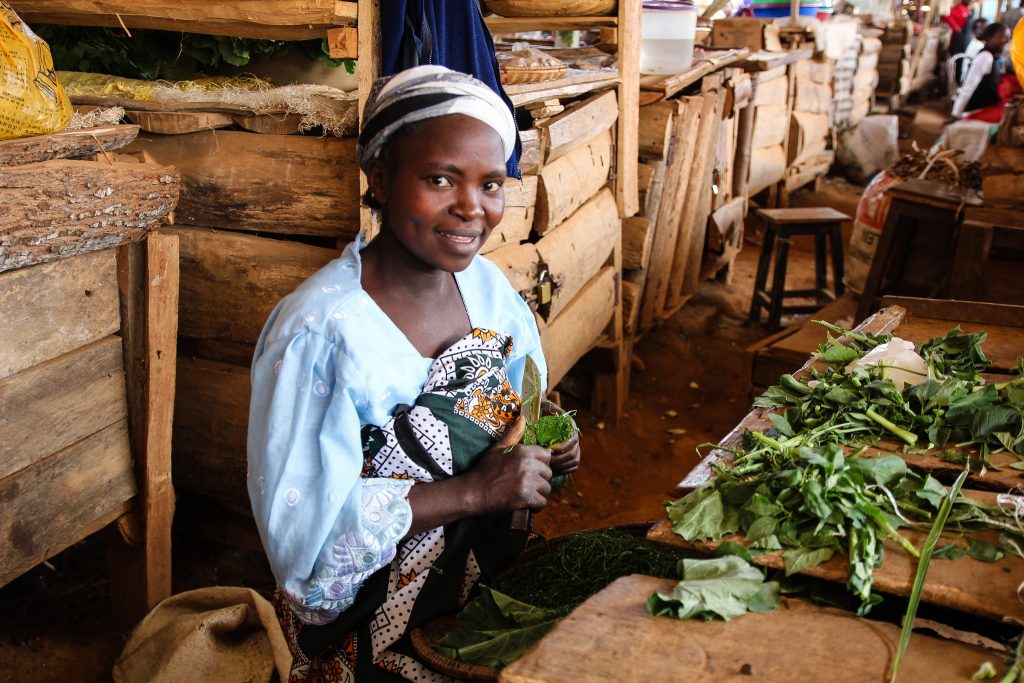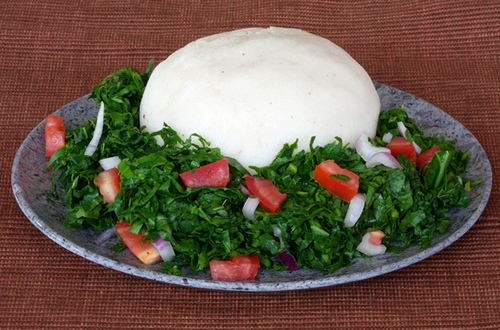The Double Life of Kale

A kale-centered juice bar recently opened along a trendy shopping street a short distance from my home in Atlanta, Georgia. At the new establishment, young, affluent consumers (so-called millennials) and others are willing to pay $7 for a kale juice drink and even more for a kale-based salad. And Atlanta is hardly unusual in this respect. In fact, in metro areas across the United States, the leafy green vegetable, whose humble origins can be traced to Europe and Africa, has become a foodie obsession, touted for its healthy attributes but also associated with the sophisticated eating habits of moneyed American consumers.
As an indication of kale’s growing popularity in this country, one business publication recently reported that the number of U.S. farms growing kale (which is in the cabbage family) more than doubled in only five years, and another titled its article on the kale craze “Boom Times for Farmers in the United States of Kale.” There’s even a National Kale Day, when the green’s fans can “kalebrate” the benefits of “King Kale.”
Nutritional and health benefits aside, kale’s recent popularity and the premium prices kale-based products command in the United States might seem comical, if not downright ridiculous, to many East Africans. In Kenya and Tanzania, kale is a key staple in highland farming communities, where it is referred to as sukuma wiki, which in Swahili means “to push the week.” (East African kale is slightly different from the varieties that are grown and eaten in the U.S., but still very similar.) Eaten with a thick, maize-based porridge called ugali, kale is what allows many East African families to get through the week, often with little more than a sprinkling of tomato, onion, or, in better-off families, a few pieces of meat mixed in. When an individual is invited to eat with a rural Kenyan family, as I have been on many occasions over the past 30-plus years, it is almost certain that at least one of the dishes will be sukuma wiki. Indeed, the poorer the family is, the more likely kale, along with ugali, will be the main part of the meal.
In Kenya, kale is grown in small garden patches on almost all rural farms, as well as along public roadsides and in peri-urban and urban neighborhoods. It can even be found along main throughways and in small patches of open space in Nairobi itself, which, with a population of about 3.75 million, is East Africa’s largest metropolitan center. For poor families, kale is often the main vegetable they grow and consume, even when they own no land. Indeed, for many East Africans, kale may be the difference between having food and going to bed hungry. I once asked a Kenyan friend why sukuma wiki is not stolen from unfenced public spaces at harvest time, especially since crime is prevalent in many Kenyan cities. While acknowledging that occasional thefts do occur, he explained that since sukuma wiki is for the poor, it is usually left alone. And so, it seems, the leafy vegetable even embodies a certain morality and compassion for the poor in East Africa.
Anthropologists have long been interested in how foods travel globally and take on varied meanings in different cultures, time periods, and social classes. In his classic book Sweetness and Power, Sidney Mintz describes how in the 17th century, sugar became an elite consumer item, grown mainly through slave labor in the Caribbean, but how, in more recent times, it has become associated with lower-income families and unhealthy diets. The work of cultural anthropologist Arjun Appadurai and others shows that commodities, including agricultural crops, have “social lives,” and that how fashionable or in demand they are shifts in response to social, cultural, and economic factors.
My own collaborative work on contract farming in Africa documents how traditional foods such as chili peppers, yams, and mangoes are considered luxuries in upscale European markets, in stark contrast to their relatively lowly status in the places where they’re actually grown. The difference between the way kale is regarded in the United States and East Africa is another example of how a product’s social and cultural meanings can be radically transformed across space and context.
Kale’s discovery by affluent consumers in the United States is also a good illustration of just how much high-income societies can learn from the dietary habits of the poor. A recent study shows that 9 of the 10 countries with the healthiest diets in the world today are found in Africa, the continent often considered the globe’s poorest and most agriculturally underdeveloped. This research shows that the relatively high consumption of fresh vegetables, fruits, and grains, combined with the lower consumption of sugary drinks, processed and unprocessed meats, and dietary cholesterol, are key reasons why African countries score better in diet health than wealthier nations. Low-income sukuma wiki consumers and farmers in East Africa may be unaware of the nutritional benefits that make kale so popular in U.S. juice shops and the media, but they learned much earlier than Americans that eating lots of kale is a good thing.


































